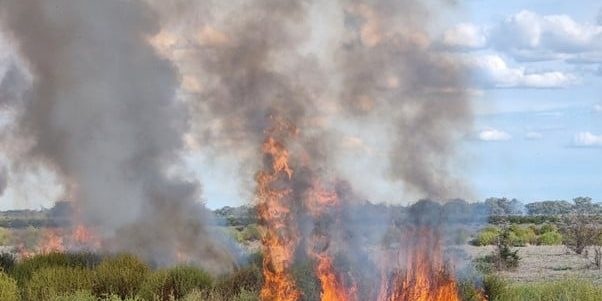A Word from the RALF (October 2023)
As we approach the end of the year, many of us are busy planning holidays with loved ones. However, for landholders, this season also brings the ever-present concern of bushfires. It’s crucial to ensure that your farm is fire-ready, as being fully prepared can help protect not only your property but also your family, pets and livestock. These are some essential steps and resources for bushfire preparedness in rural NSW.
Creating a Fire-Ready Plan
The first and most crucial step in bushfire preparedness is to have a clear plan in place. To develop your Animal Emergency Plan or Farm Fire Plan, turn to valuable resources provided by the NSW State Emergency Service (SES) and NSW Rural Fire Service (RFS). These organisations offer guidance on how to discuss and formulate your plan effectively.
Steps to protect your property and livestock
Emergency plans: Start by creating or reviewing your animal emergency plan and farm fire plan. Ensure that everyone on your farm understands their role in case of a fire emergency.
Safe paddocks: Prepare low-risk paddocks where your livestock can access water easily and where the potential for bushfire fuel is minimal. These paddocks should be large enough to allow your animals to move away from the fire and ideally be protected by a road or a 3-6-meter ploughed fire break.
Hay storage: Keep hay stored at multiple locations to minimise the risk of loss. Protect sheds with a fire break and reduce fuel levels around them to mitigate the fire’s impact.
Identification: Ensure that all your livestock are identified with National Livestock Identification System ear tags, and microchip your horses, cats, and dogs. This identification can be invaluable in the event of evacuation or rescue.
Emergency kit: Prepare an emergency kit for your animals. This should include a list of emergency phone numbers, any necessary medications, animal first aid supplies, wire cutters, and a sharp knife.
Coordinated rescue and care
In a bushfire emergency, Local Land Services collaborates with the NSW Department of Primary Industries to coordinate rescue, evacuation, and emergency care for animals. Knowing that there is a support system in place can provide peace of mind during challenging times.
Contact Local Land Services
For further information and advice on how to prepare for bushfires, don’t hesitate to reach out to Local Land Services at 1300 795 299 or visit your nearest Local Land Services office. They can provide specific guidance tailored to your location and circumstances.
Bushfire preparedness is not an option but a necessity for rural residents in New South Wales. By creating and implementing a comprehensive emergency plan, protecting your property, and staying informed through resources provided by SES, RFS, and Local Land Services, you can significantly enhance your ability to safeguard your farm, livestock, and loved ones in the face of bushfire threats.
This article was written by Jade Auldist. Jade is the Regional Agriculture Landcare Facilitator (RALF) for the Riverina region. Her role supports farmers, industry and community groups (including Landcare Groups) to adopt new and innovative sustainable agriculture practices.
For further information on this article, please contact Jade at jade.auldist@lls.nsw.gov.au.







